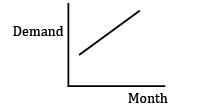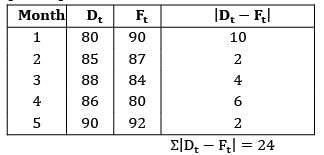Test: Forecasting Level - 1 - Mechanical Engineering MCQ
20 Questions MCQ Test - Test: Forecasting Level - 1
Which one of the following is not a technique of Long Range Forecasting?
Which one of the following forecasting techniques is most suitable for making long range forecasts?
Which one of the following is a qualitative technique of demand forecasting?
For sales forecasting, pooling of expert opinions is made use of in
In an n-month moving average methods for stable demand, the ‘n’ value in a simple moving average method should be
The actual demand values for 4 months is known. To calculate the forecasted demand value for 5th month using 4 month moving average method, what will be the weightage given to demand values?
Which of the following is not a weighted average method?
Which one of the following methods can be used for forecasting when a demand pattern is consistently increasing or decreasing?
Which of the following represents forecasting errors?
1. Mean forecast error
2. Mean absolute deviation
3. Tracking signal
Consider the given sales data
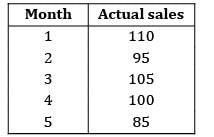
The forecast weights are given as 40%, 30%, 20% and 10%. Find the forecasted value for the month of 6 using 4 month weighted moving average method.
Using the exponential smoothing method of forecasting, what will be the forecast for the fourth week if the actual and forecasted demand for the third week is 480 and 500 respectively and α = 0.2?
The demand for a product in the month of March turned out to be 20 units against an earlier made forecast of 20 units. The actual demand for April and May turned to be 25 and 26 units respectively. What will be the forecast for the month of June, using exponential smoothing method and taking smoothing constant α as 0.2?
Which of the following curve represents variation of weights with respect to time for exponential smoothening method?
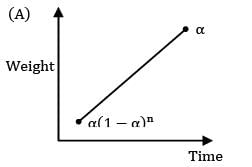

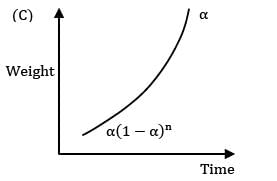
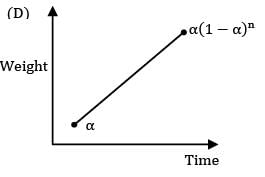
The sale of cars in a shop for four years is given as 102, 98, 108, 115. The sales follow exponentially smoothening average method with a smoothing factor of 0.2. The number of sales in the subsequent month will be (approximately):
The actual demand for a product from January to June is known. The actual demand and forecasted demand for the month of June is 90 and 80. Find the forecasted demand for the month of July.
Which of the following forecast error is not used widely because of null effect?
Which of the following method can be used for the following demand data?

Consider the following demand data values

The mean absolute deviation is



